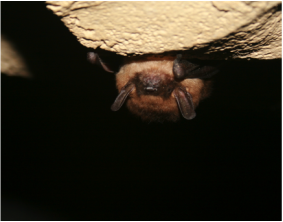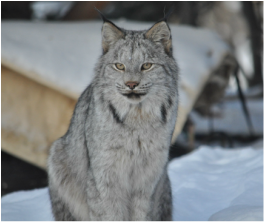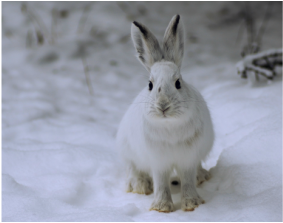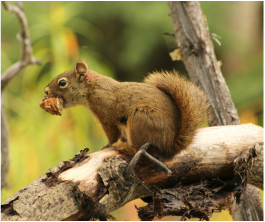Current Research:
In collaboration with Dr. Jesse Popp and Amanda Karst
Environmental stewardship dictated by Indigenous laws, values, and knowledge systems plays a critical role in preserving and protecting biodiversity and entire ecosystems, worldwide. Yet, natural resource management and associated decision-making processes in Canada, especially at the government and academic levels, have a history of exclusion of Indigenous voices and remain guided primarily by Western-science-based knowledge systems. A more holistic and reciprocal approach to environmental monitoring and research would be one that includes Indigenous Knowledge and values that drive traditional ways of life and relationships to the land into the entire monitoring and management process, including the study design, methodologies, and data collection. A major barrier to reconciling ways of knowing in environmental monitoring and research is a general uncertainty of how to do this on-the-ground. There are a number of theoretical frameworks that describe how to bring ways of knowing together to better observe and understand the world in theory (e.g., Two-Eyed Seeing, two-row wampum) but, fewer resources available on how to achieve this in practice. Thus, a necessary step is to develop practical frameworks for both Indigenous and Western scientists interested in effectively interweaving ways of knowing into their research and monitoring initiatives and ensure that this is done in a good way. I am working with a team of researchers, conservation practitioners, community members and Indigenous Knowledge holders to summarize perspectives on the best practices and on-the-ground examples of interweaving knowledge systems in natural sciences, identify the Indigenous values that need to be prioritized in environmental monitoring and research, and determine which methodologies are most effective at doing so. We will also apply these principles and perspectives to developing and implementing Indigenous-led wildlife monitoring programs in partnership with First Nations in Manitoba and Ontario. Developing approaches to environmental research, monitoring, and management that truly respect Indigenous rights and knowledge systems ensure that important decisions are made with all of the tools and knowledge available, and will create a path forward for conservation science that is rooted in mutual respect, reciprocity, and reconciliation.
In collaboration with Dr. Jesse Popp and Amanda Karst
Environmental stewardship dictated by Indigenous laws, values, and knowledge systems plays a critical role in preserving and protecting biodiversity and entire ecosystems, worldwide. Yet, natural resource management and associated decision-making processes in Canada, especially at the government and academic levels, have a history of exclusion of Indigenous voices and remain guided primarily by Western-science-based knowledge systems. A more holistic and reciprocal approach to environmental monitoring and research would be one that includes Indigenous Knowledge and values that drive traditional ways of life and relationships to the land into the entire monitoring and management process, including the study design, methodologies, and data collection. A major barrier to reconciling ways of knowing in environmental monitoring and research is a general uncertainty of how to do this on-the-ground. There are a number of theoretical frameworks that describe how to bring ways of knowing together to better observe and understand the world in theory (e.g., Two-Eyed Seeing, two-row wampum) but, fewer resources available on how to achieve this in practice. Thus, a necessary step is to develop practical frameworks for both Indigenous and Western scientists interested in effectively interweaving ways of knowing into their research and monitoring initiatives and ensure that this is done in a good way. I am working with a team of researchers, conservation practitioners, community members and Indigenous Knowledge holders to summarize perspectives on the best practices and on-the-ground examples of interweaving knowledge systems in natural sciences, identify the Indigenous values that need to be prioritized in environmental monitoring and research, and determine which methodologies are most effective at doing so. We will also apply these principles and perspectives to developing and implementing Indigenous-led wildlife monitoring programs in partnership with First Nations in Manitoba and Ontario. Developing approaches to environmental research, monitoring, and management that truly respect Indigenous rights and knowledge systems ensure that important decisions are made with all of the tools and knowledge available, and will create a path forward for conservation science that is rooted in mutual respect, reciprocity, and reconciliation.
Ph.D. Research
Environments change over time and, as the environment changes, animals have to change too, in order to maintain function and stay alive. The ways in which animals change, and by how much, determines their tolerances for environmental variation and defines the times (when) and the places (where) they can be successful. The capacity of endotherms to maintain relatively constant and elevated body temperature (i.e., endothermic homeothermy) by adjusting both physiological and behavioural traits in response to environmental variation is considered a critical evolutionary step in the adaptive radiation of birds and mammals. But, the challenges of studying physiology in the field have, to date, limited available data on the extent and significance of body temperature, metabolic, and behavioural variation of free-ranging endotherms in response to the numerous and interacting ways that natural environments can vary. More recently, the advent of miniaturized, animal-borne data loggers (i.e., biologgers) has revolutionized the study of animal physiology, especially as it relates to behaviour, ecology, and natural history, by enabling better quantification of physiology outside of the lab, behavioural variation in the absence of an observer, and environmental variation as it is experienced by an organism. For my PhD, I used emerging biologging technology alongside traditional measures of field metabolic rate (via doubly labeled water) to document variation in the body temperature, heart rate, activity, and daily energy expenditure of two prey species – North American red squirrels (Tamiasciurus hudsonicus) and snowshoe hares (Lepus americanus) – and their shared predator – Canada lynx (Lynx canadensis) – at the same time (i.e., winter), in the same place (i.e., northern boreal forest), to investigate how these coexisting species adjust to and tolerate the cold, dark, and resource-limited boreal winters. To read more, my first PhD publication can be found here.
My field work was based at Squirrel Camp in southwestern Yukon, between the town of Haines Junction and Kluane Lake (one of the most beautiful places to visit; see photos). Ecological monitoring and research has occurred in this area for decades and I was fortunate to be part of the extensive team of professors and graduate students that have done work there. Thank you to the Champagne and Aishihik and Kluane First Nations for allowing us to be visitors and conduct field work on their traditional territory, and to the community members of Haines Junction for their hospitality and support.
Media Coverage:
Lynx-hare research in Kluane: Up Here Magazine article, radio documentary about Squirrel Camp
Long-distance movements of two collared lynx: Alaska Fish and Wildlife News article, CBC A New Day radio interview, CBC North article, Copper River Record article
Check out a few of our study animals (lynx and hares) on the CBC's nature documentary "The Wild Canadian Year", here.
Flyers for the community, summarizing our research and our team: Fall 2017, Spring 2018
My field work was based at Squirrel Camp in southwestern Yukon, between the town of Haines Junction and Kluane Lake (one of the most beautiful places to visit; see photos). Ecological monitoring and research has occurred in this area for decades and I was fortunate to be part of the extensive team of professors and graduate students that have done work there. Thank you to the Champagne and Aishihik and Kluane First Nations for allowing us to be visitors and conduct field work on their traditional territory, and to the community members of Haines Junction for their hospitality and support.
Media Coverage:
Lynx-hare research in Kluane: Up Here Magazine article, radio documentary about Squirrel Camp
Long-distance movements of two collared lynx: Alaska Fish and Wildlife News article, CBC A New Day radio interview, CBC North article, Copper River Record article
Check out a few of our study animals (lynx and hares) on the CBC's nature documentary "The Wild Canadian Year", here.
Flyers for the community, summarizing our research and our team: Fall 2017, Spring 2018
 Photo by: James Turner
Photo by: James Turner
M.Sc and B.Sc Research
Selection has favoured a range of adaptations that help maintain positive energy balance in the presence of seasonal environmental variation and periods of energetic constraint, one of which is torpor and/or hibernation. The optimal expression of torpor may vary for different individuals depending on a range of factors (e.g., body condition, sex, age etc), which creates the potential for biologically significant variation in torpor use. Very few studies have looked at how an individual's behavioural tendencies (or personality) influences their torpor expression. So, for my honours project, I helped develop the first behavioural test for personality in bats and used it to test the hypothesis that individual personality (i.e., activity and exploration) influences basal metabolic rate and summer torpor expression of little brown bats. For my masters, I followed this up looking at the influence of body condition, sex, age, and personality on over-winter torpor expression and energy use in big brown bats. I also investigated repeatability and heritability of body condition and torpor expression using molecular markers and quantitative genetics to determine if certain hibernation traits have the capacity to evolve in response to selection.
Field research was conducted in central Manitoba and northwestern Ontario, predominately on First Nations traditional territory; thank you to those communities, namely the Misipawistik Cree Nation, for allowing us to conduct our work there.
Note: Hibernating bats are being killed in large numbers by a devastating disease called White Nose Syndrome, caused by a cold-loving fungus that grows on bats as they hibernate. This disease was discovered in New York state in 2006/2007 and, since then, has spread rapidly across north eastern North America, killing millions of bats. Read more about it here and what you can do to help here.
Selection has favoured a range of adaptations that help maintain positive energy balance in the presence of seasonal environmental variation and periods of energetic constraint, one of which is torpor and/or hibernation. The optimal expression of torpor may vary for different individuals depending on a range of factors (e.g., body condition, sex, age etc), which creates the potential for biologically significant variation in torpor use. Very few studies have looked at how an individual's behavioural tendencies (or personality) influences their torpor expression. So, for my honours project, I helped develop the first behavioural test for personality in bats and used it to test the hypothesis that individual personality (i.e., activity and exploration) influences basal metabolic rate and summer torpor expression of little brown bats. For my masters, I followed this up looking at the influence of body condition, sex, age, and personality on over-winter torpor expression and energy use in big brown bats. I also investigated repeatability and heritability of body condition and torpor expression using molecular markers and quantitative genetics to determine if certain hibernation traits have the capacity to evolve in response to selection.
Field research was conducted in central Manitoba and northwestern Ontario, predominately on First Nations traditional territory; thank you to those communities, namely the Misipawistik Cree Nation, for allowing us to conduct our work there.
Note: Hibernating bats are being killed in large numbers by a devastating disease called White Nose Syndrome, caused by a cold-loving fungus that grows on bats as they hibernate. This disease was discovered in New York state in 2006/2007 and, since then, has spread rapidly across north eastern North America, killing millions of bats. Read more about it here and what you can do to help here.



